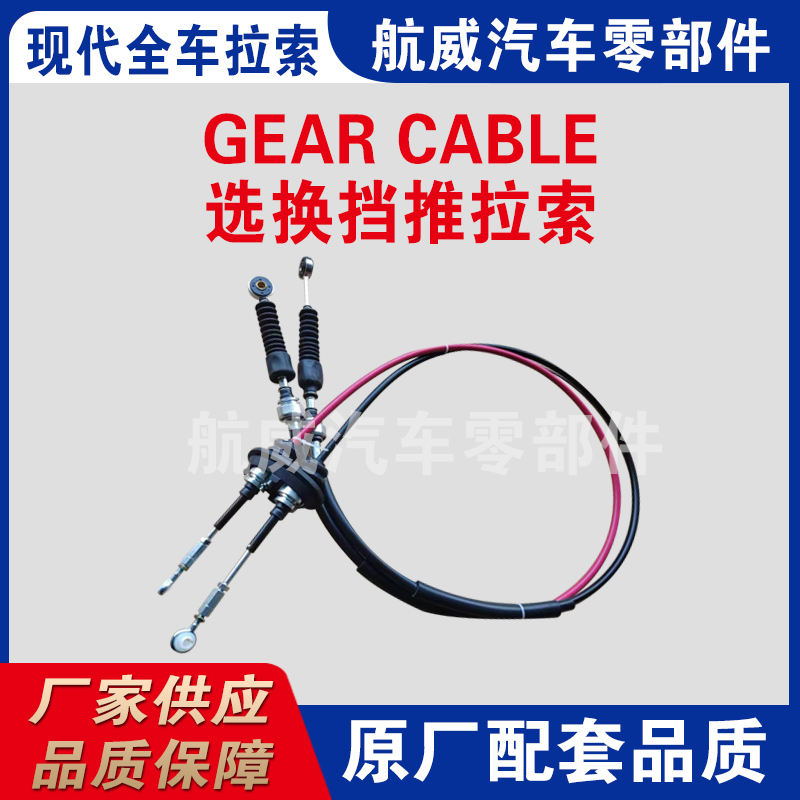Understanding the Importance of Handbrake Cables in Vehicle Safety and Performance
The Importance of Handbrake Cables in Vehicle Safety
Handbrake cables play a crucial role in the overall safety and functionality of a vehicle. Also known as emergency brake cables, these components are responsible for engaging the handbrake system, allowing drivers to secure their vehicles when parked and ensuring additional safety in case of primary brake failure. Understanding the importance of handbrake cables and how to maintain them can prevent accidents and enhance vehicle performance.
Handbrake cables are typically made of high-strength steel, encompassing inner cables, outer casings, and various fittings that connect to the handbrake lever and rear brake components. When the handbrake lever is pulled, the cables tighten, pulling on the brake shoes or calipers, thereby applying the brakes to the rear wheels. This mechanism is particularly vital in manual vehicles, where operators often rely on the handbrake to keep their cars stationary, especially on inclines.
One key aspect of handbrake cables is their durability. They are designed to withstand significant wear and tear due to their role in the braking system. Over time, however, exposure to the elements, such as moisture, dirt, and road salts, can lead to corrosion and degradation of the cables. As a result, regular inspection and maintenance are necessary to ensure they remain in good working condition. Drivers should check for signs of fraying, rust, or broken strands, as these can indicate that it is time for a replacement.
handbrake cables

Another critical factor is the proper adjustment of handbrake cables. If the cables are too loose, the handbrake may not engage securely, leading to a potential rolling risk when parked. Conversely, if they are too tight, they can cause premature wear on the brake components and might even lead to brake drag, which can affect fuel economy and overall vehicle performance. Regular adjustments based on the manufacturer's specifications can ensure optimal functionality and safety.
When it comes time for replacement, choosing high-quality handbrake cables is essential. Substandard parts may save money initially but can lead to further complications down the line, compromising safety. It's advisable to look for cables that meet or exceed OEM (Original Equipment Manufacturer) standards for reliability and performance.
In addition to routine maintenance, drivers should also be aware of the importance of using the handbrake appropriately. Engaging the handbrake fully after parking, especially on slopes, is crucial. It is also vital to release the handbrake properly to avoid stress on the cables, which can lead to premature wear.
In conclusion, handbrake cables are a vital component of vehicle safety that requires attention and care. Regular inspections, proper adjustments, timely replacements, and responsible usage can significantly enhance the reliability of the handbrake system. By prioritizing the maintenance of handbrake cables, drivers can ensure that their vehicles remain safe and functional, safeguarding not only themselves but also others on the road.
-
Upgrade Your Vehicle with High-Quality Handbrake CablesNewsNov.01,2024
-
Optimize Your Bike's Performance with Quality CablesNewsNov.01,2024
-
Enhance Your Vehicle's Performance with Quality Clutch ComponentsNewsNov.01,2024
-
Elevate Your Vehicle's Performance with Quality Throttle CablesNewsNov.01,2024
-
Elevate Your Vehicle's Performance with Quality CablesNewsNov.01,2024
-
Affordable Solutions for Your Cable NeedsNewsNov.01,2024
